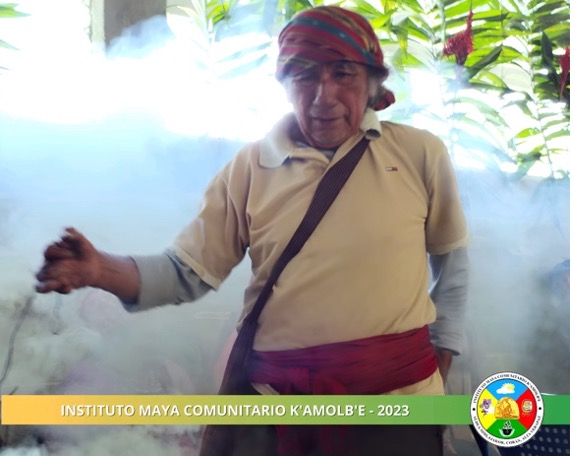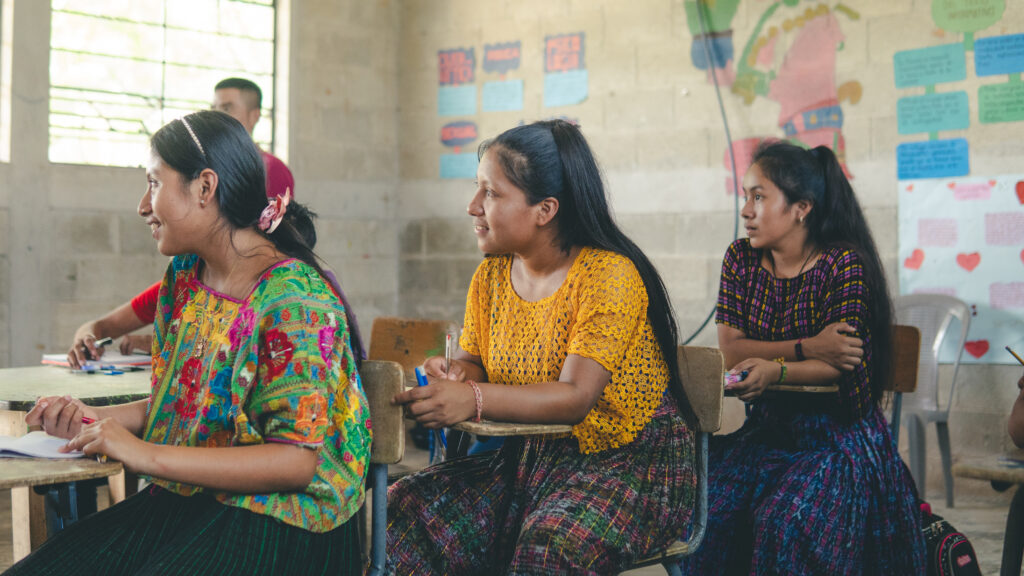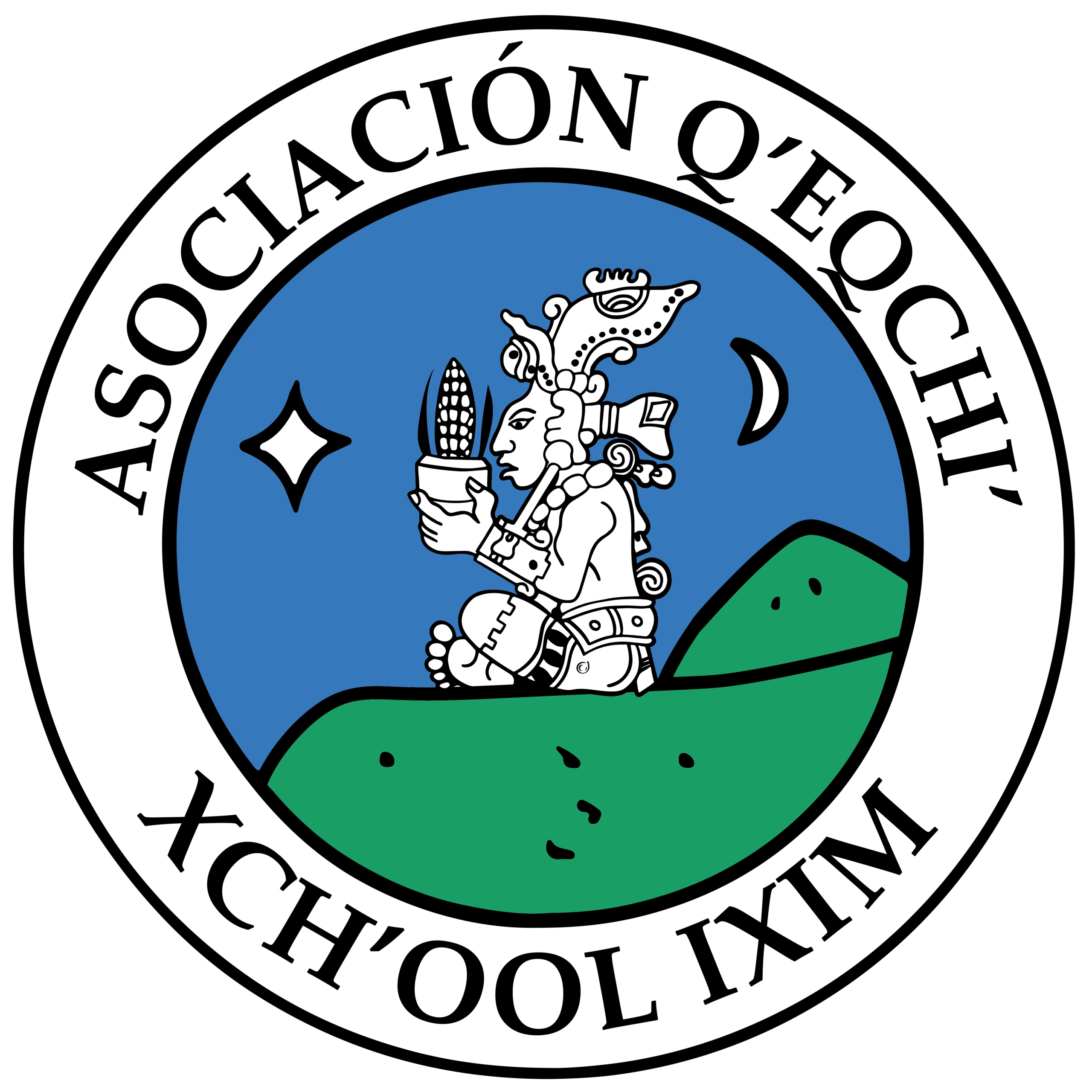
The Q’eqchi’ Association Xch’ool Ixim (Heart of Corn) has always aimed to maintain the ancestral knowledge and save the Mayan values that have been lost. This is why Xch’ool Ixim (Heart of Corn) works to strengthen the Maya Q’eqchi’ culture.
The involvement of the elderly, the community leaders and spiritual guides form a part of our curriculum. The Association has a nominated figure “Chinam” to lead spiritual and cultural activities. A Chinam is a community leader who leads the cultural, social and spiritual activities during one year. This leader can also be seen as the “year-carrier.” Additionally, there is a Mayan altar that is used for sacred ceremonies and rituals by the elderly. The elders are also the “voice” of our ancestors. Since our ancestors did not read or write (with the exception of hieroglyphs), the way that our history, rituals, and customs were practiced is conveyed through oral narratives. Specific elders have dedicated their lives to the art of story-telling which is a well-rehearsed and memorized delivery of poetic verses that describe the practices and beliefs of our Maya ancestors.

Q’eqchi’ Ancient Legends
Sadly, the art of oral narration is at risk as our elders are dying. That means that the Maya culture is at risk too. Most Q’eqchi’ youth do not have access to Maya elders who can share our ancestral beliefs and ways of doing things. Xch’ool Ixim (Heart of Corn) is fortunate to have access to a collection of 21 Q’eqchi’ Maya legends and customs, as narrated by a group of elders from Cobán, the capital of the department of Alta Verapaz. This rich collection of texts was recorded by Dr. Berinstein in 1978 while doing her dissertation fieldwork in Cobán. Recently (in September 2023), Berinstein visited two primary schools in Nimlah’akok and our secondary school IMaCK with Fredy Oxom. She presented bilingual Q’eqchi’- Spanish translations of one of the recorded Maya legends, “The Dance of the Deer,” and distributed the books to the teachers and students at each of the three schools. The Deer Dance is performed to this day and has a history that can be traced to pre-Columbian times. While everyone was acquainted with the dance, no one had heard the legend. The teachers’ delight upon hearing it, encouraged students to stand up and read aloud. It was as if the festival had come alive in the room and one’s own cultural heritage was acclaimed. Berinstein’s collection was donated to Xch’ool Ixim (Heart of Corn). Until now, teachers lacked resources for a class in Maya cultural education. At these three schools, we witnessed how powerful it is to read a legend in one’s own first language and to see a school book written in one’s own first language, for the first time!
The documentation of Mayan texts helps to elucidate Mayan oral literature, life and thought, both ancient and modern. With support from the Ministry of Education, Oxom is working on the development of a curriculum to integrate Maya cultural education in the natural sciences to raise cultural awareness, enhance learning, promote family engagement, and to support collective memory and cultural identity.

